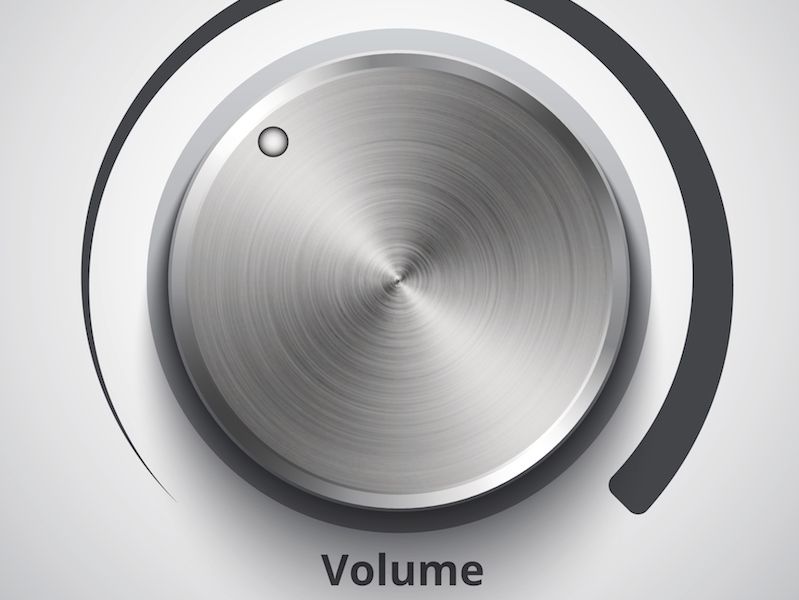
Have you ever gone to the beach and noticed one of those “Beware of Shark” signs? It’s not hard to understand that you should never disregard a caution like that. You may even rethink swimming at all with a sign like that (if the warning is written in big red letters that’s particularly true). But people usually don’t heed cautions about their hearing in the same way for some reason.
Recent studies have found that millions of people neglect warning signs regarding their hearing (these studies exclusively looked at populations in the UK, but there’s little doubt the problem is more global than that). Part of the challenge is awareness. It’s pretty intuitive to be fearful of sharks. But the majority of people don’t have an overt fear of loud noises. And how do you recognize how loud is too loud?
Loud And Hazardous Sound is All Around us
Your ears are not just in danger at a live concert or construction site (although both of those venues are, indeed, dangerous to your hearing). Many common sounds can be harmful. That’s because exposure time is as hazardous as the volume. Your hearing can be injured with even low level sounds like dense city traffic if you experience it for more than a couple of hours at a time.
Read on to find out when sound gets too loud:
- 30 dB: Everyday conversation would be at this sound level. You should be perfectly fine at this volume for an indefinite period.
- 80 – 85 dB: This is the sound level of heavy traffic, lawn equipment, or an air conditioning unit. After about two hours this level of sound becomes dangerous.
- 90 – 95 dB: Think of how loud a motorcycle is. 50 minutes is enough to be harmful at this volume.
- 100 dB: An approaching subway train or a mid-sized sports event are at this sound level (of course, this depends on the city). 15 minutes of exposure will be enough to be unsafe at this sound level.
- 110 dB: Have you ever cranked your Spotify music up to ten? That’s normally around this volume on most smartphones. This amount of exposure is dangerous after only 5 minutes of exposure.
- 120 dB and over: Any sound over 120 dB (think loud rock show or exceptionally large sporting events) can bring about instant injury and pain in your ears.
What Does 85 Decibels Sound Like?
In general, you should regard anything 85 dB or louder as putting your hearing in the danger zone. But it can be hard to know how loud 85 dB is and that’s the issue. A shark is a tangible thing but sound is not so tangible.
And hearing warnings often go ignored because of this when the sound environment isn’t loud enough to cause pain, this is especially true. There are a couple of possible solutions to this:
- Sufficient training and signage: This applies to workspaces, in particular. The significant hazards of hearing loss can be reinforced by signage and training (and the advantages of hearing protection). In addition, just how loud your workplace is, can be made clear by signage. Training can help employees know when hearing protection is required or suggested.
- Get an app: There isn’t an app that’s going to directly protect your ears. But there are several free apps that can function as sound level monitors. It’s hard to judge what 85 dB feels like so your hearing can be damaged without you even knowing it. Utilizing this app to keep track of noise levels, then, is the solution. This will help you establish a sense for when you’re entering the “danger zone” (and you will also recognize immediately when things are getting too noisy).
When in Doubt: Protect
No app and no signage will ever be perfect. So take the time to safeguard your ears if you have any doubt. Over a long enough period of time, noise damage will almost definitely create hearing problems. And these days, it’s never been easier to harm your ears (all you need to do is turn your headphone volume up a little too high).
You shouldn’t raise the volume past mid way, particularly if you’re listening all day. You require noise cancellation headphones if you are continually turning up the volume to block out background noise.
That’s the reason why it’s more important than ever to recognize when loud becomes too loud. And in order to do this, you need to raise your own awareness and knowledge level. Protecting your ears, using ear protection, or limiting your exposure, is not that difficult. That starts with a little knowledge of when you should do it.
Nowadays that should also be easier. Particularly now that you know what to look for.
Think you could have hearing loss? Schedule a test.
